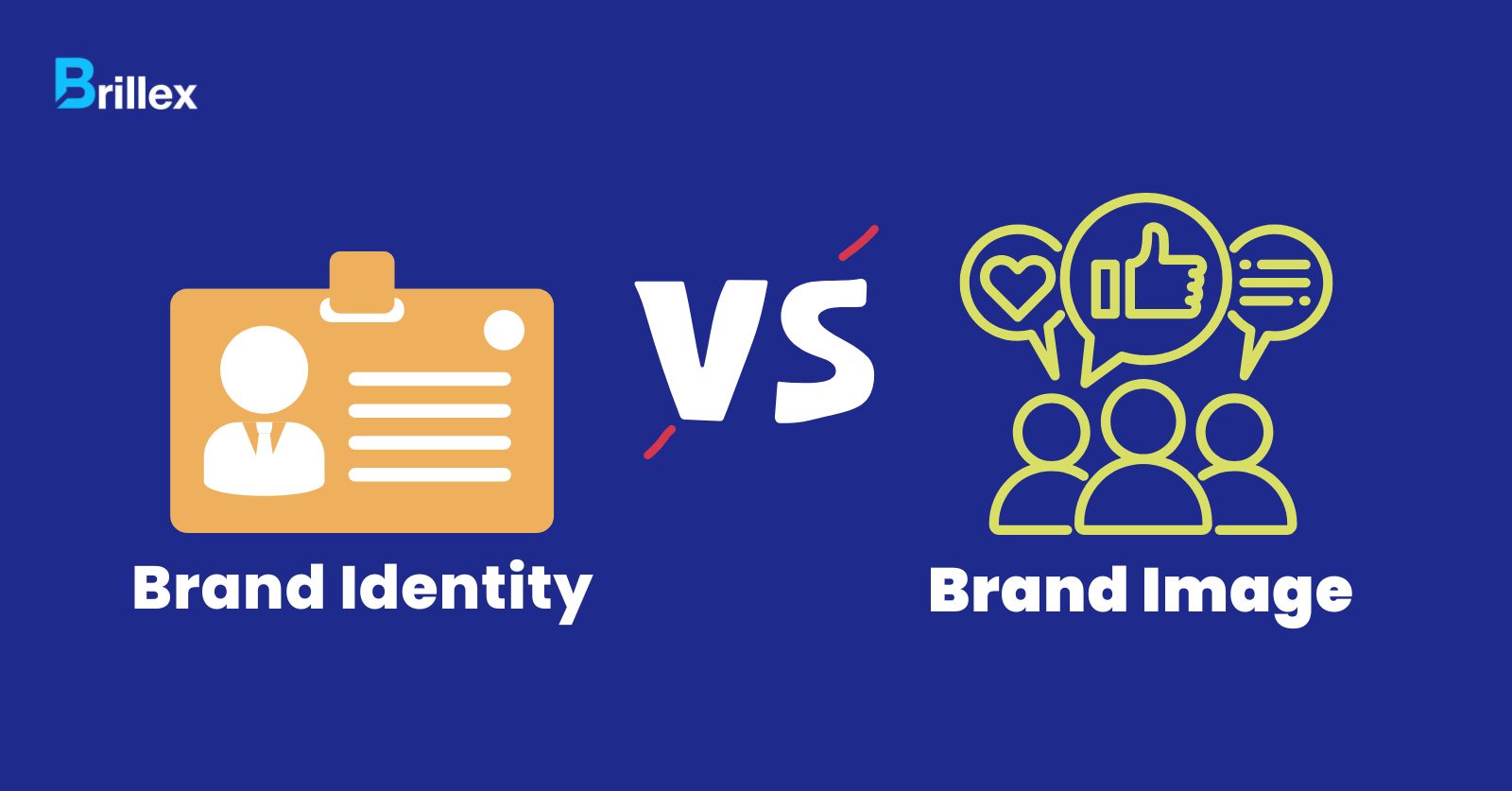In the world of branding, two terms frequently arise in conversation: brand identity vs brand image. Though they sound similar and are often used interchangeably, they represent fundamentally different concepts that serve distinct purposes in your branding strategy. Understanding this difference isn’t just academic—it can mean the difference between a successful brand strategy and a misguided one that wastes resources and opportunities.
🔍 Brand Identity: The Blueprint of Your Brand
Brand identity is how a company defines and communicates itself to the world. Think of it as your brand’s visual and verbal DNA. It includes everything that you design and articulate to control how the audience perceives your business. Brand identity is created intentionally and strategically by the company itself. It’s the ideal version of how you want customers to see you. Like a person’s sense of self, your brand identity is something you define, develop, and maintain over time.
As Jeff Bezos famously said: “Your brand is what other people say about you when you’re not in the room.” Your brand identity is your attempt to influence what they’ll say.
Elements of Brand Identity:
- Logo & Colors: Visual assets (like Coca-Cola’s red and white color scheme).
- Typography: The font and layout style (e.g., Google’s clean, friendly font).
- Tone of Voice: The language and attitude in communication (e.g., Wendy’s playful and cheeky tone on Twitter).
- Brand Story: The narrative that gives emotional depth.
- Mission, Vision & Values: The core purpose and guiding beliefs.
💡 Example:
Tesla’s brand identity revolves around innovation, sustainability, and futuristic design. From their minimalist logo to their ambitious mission of accelerating the world’s transition to sustainable energy, their identity is clearly defined.
🧠 Brand Image: The Public’s Perception
Brand image, in contrast, is how the audience actually sees your brand. It’s shaped by experiences, opinions, reviews, and public sentiment. Importantly, it’s not always in your control—even if you’ve crafted the perfect identity.
Unlike brand identity, which is within your control, brand image is formed in the minds of others. It’s the sum total of all impressions, experiences, and beliefs people have about your brand. While you can influence brand image through your identity and marketing efforts, you cannot fully control it.
This makes brand image more fluid and subject to change based on market factors, customer experiences, and external events that may be beyond your influence.
Key Influencers of Brand Image:
- Customer Experience & Reviews
- Social Media Reputation
- Press Coverage & PR
- Influencer Endorsements
- Word of Mouth
💡 Example:
Facebook (now Meta) intended its brand identity to be about connection and innovation. But due to data privacy issues and public scrutiny (source), its brand image took a hit, being associated with mistrust and ethical concerns.
🆚 Brand Identity vs. Brand Image: Key Differences
| Aspect | Brand Identity | Brand Image |
| Definition | How a company defines itself | How consumers perceive the brand |
| Creation | Deliberately crafted by the company | Forms naturally in customers’ minds |
| Control | Within company control | Only partially influenced by company |
| Nature | Stable and consistent | Fluid and evolving |
| Components | Visual and verbal elements, values | Perceptions, associations, emotions |
| Direction | Inside-out (company to market) | Outside-in (market to company) |
| Measurement | Brand audits, consistency checks | Feedback, reviews, brand sentiment analysis |
🔗 Why This Distinction Matters More Than Ever
Many startups and small businesses invest heavily in visual design but ignore how they’re actually perceived. Here’s why bridging the gap between identity and image matters:
1. Builds Credibility
Consistency in identity and image reinforces trust. A 2021 survey by Lucidpress revealed that consistent branding across all platforms can increase revenue by up to 23%.
2. Helps Diagnose Reputation Issues
A mismatch can expose weaknesses. If you promise “customer-first” but reviews say otherwise, your image contradicts your identity.
3. Influences Purchase Decisions
According to Edelman’s Trust Barometer, 81% of consumers say they must trust a brand before buying from them.
🔨 Bridging the Gap: How to Align Brand Identity with Brand Image
To ensure your brand is perceived the way you want it to be, consider the following:
1. Audit Your Brand Regularly
Evaluate visuals, messaging, and customer sentiment across all touchpoints.
2. Gather Feedback Constantly
Use tools like Typeform or Google Forms to gather customer feedback. Social listening via platforms like Brand24 or Mention helps too.
3. Improve Internal Communication
Make sure every team—marketing, sales, support—is aligned with your brand’s voice and values.
4. Engage Consistently
Be active on social media, respond to queries, own your mistakes, and be transparent—this shapes perception in your favor.
Conclusion
Understanding the difference between brand identity and brand image is essential for effective brand management. Your brand identity is the foundation you build, while your brand image is the structure that others see. Both must be strong and aligned for your brand to thrive.
By recognizing which aspect needs attention—your controlled identity or your perceived image—you can allocate resources more effectively and build a brand that resonates authentically with your target audience. Remember that the strongest brands are those where identity and image align seamlessly, creating a coherent and compelling brand experience from every angle.
The key to success? Build an authentic identity, consistently deliver on your promises, listen to how you’re perceived, and be willing to evolve when necessary. When what you project and how you’re perceived align perfectly, that’s when brand magic happens.
❓ What is the difference between a brand identity and a brand image?
Brand identity is how a business wants to be seen—through its visuals, messaging, and values. Brand image is how people actually perceive the brand based on their interactions and experiences. Identity is internal and controlled by the company; image is external and shaped by the audience.
❓ What is the relationship between brand image and brand identity?
Brand identity influences brand image. A consistent, authentic identity helps build a strong image in the public’s mind. When both are aligned, it boosts brand trust and recognition. A gap between the two can lead to confusion or loss of credibility.
❓ Is image the same as identity?
No, brand image and identity are not the same. Identity is how a brand defines itself; image is how others perceive it. The identity is created, while the image is earned through audience perception and experience.





